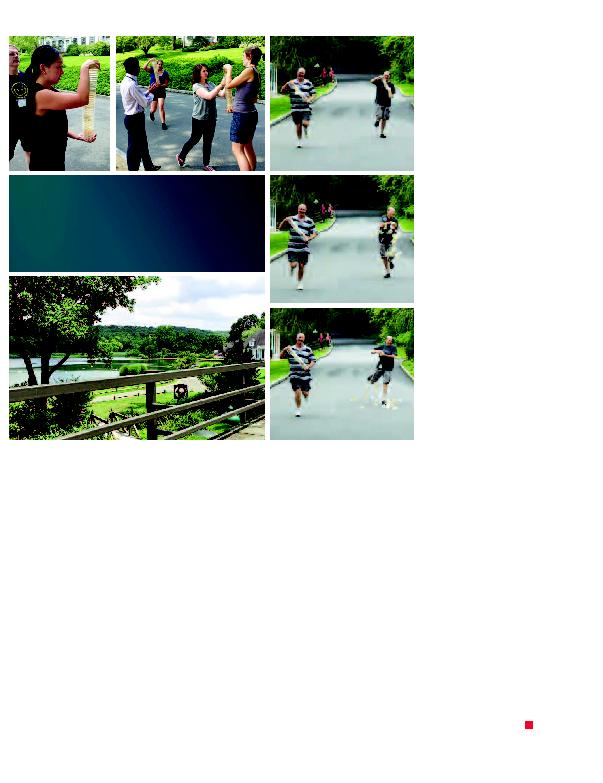
the quintessential resource for comprehensive, integrated bio-
logical information about Saccharomyces cerevisiae. Dr.
Costanzo encouraged Dr. Gartenberg to send any quality
images the students produced during the module to be con-
sidered for inclusion on the site.
egories. After its selection as "Best in Show," the overall win-
ning image--
mitted to the SGD for consideration. The photo, which depicts
the spindle-shaped structure that develops within the cell's
prised and extremely pleased by the recognition.
for Melinda and her two students, and it is very satisfying just
to have the course represented on such a prestigious site."
ry that encouraged students
to enhance the images they'd
taken and turn them into
movie posters, was just part
of the icebreakers and team-
building activities planned
throughout the course to help
students--and instructors--
let off steam and have fun,
Dr. Gartenberg says. It was
essential to provide an outlet
for everyone to get away
from the tension of the lab for
a little while, with classic
Cold Spring Harbor events
that included a schooner trip
and a visit from a caricature
artist at an evening banquet,
he adds.
its beginnings in an offhand
bet years ago that one in-
structor could carry 40 petri
end-of-course contest brings out the competitive spirit and
camaraderie of the students, instructors, and TAs in the vari-
ous courses at Cold Spring Harbor Laboratory. This relay-
style race involves team members from each of the ongoing
courses running a lap while balancing 40 used petri dishes,
then attempting to hand off that stack to the next runner on
the team. The winning team must cross the finish line first
without dropping any of the dishes. The competition is heat-
ed, and frequent "plate practices" take place during any
downtime in the prior weeks.
"the agony of defeat" at the culminating event, he says that
the course has undoubtedly been a winning experience.
knowledge to others who can develop it and use it as the
foundation of further discoveries. It's really rewarding to be
making a difference in this way," Dr. Gartenberg says.
genomics has a rigorous schedule. It demands 16-hour days or longer
are leaders in their respective fields, and hands-on experimental techniques,
along with contests and team-bulding activities. The famed Plate Race, is
the highly anticipated end-of-course contest that brings out the competitive
spirit and camaraderie of the students, instructors, and TAs in the various
courses at the Cold Spring Harbor Laboratory.
H
O
C
T
E
S
Y
O
M
C
R
.
G
T
E
N
E
R
G
P
H